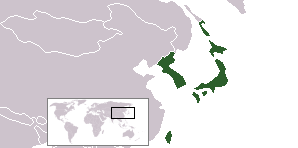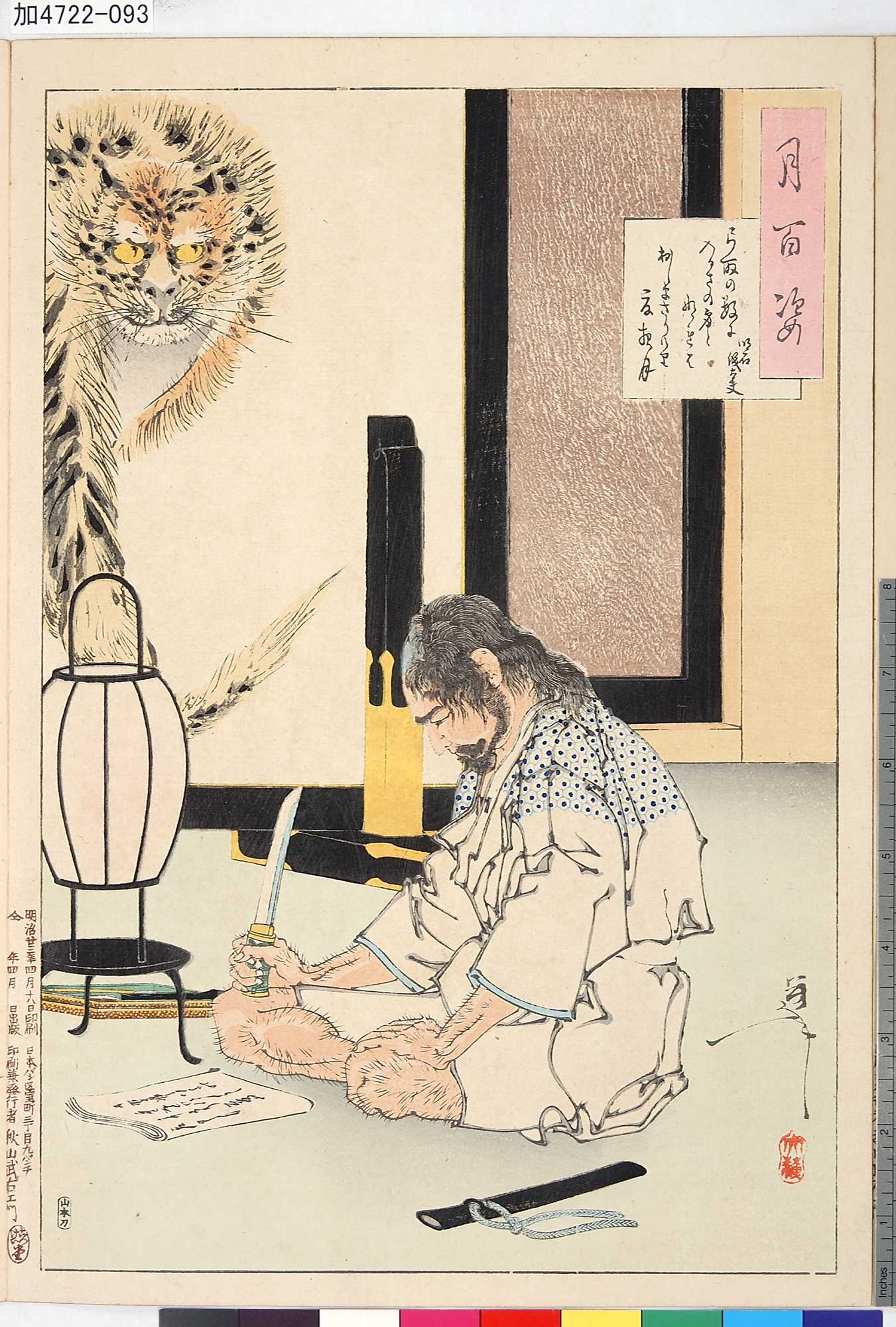|
Gesshū Sōko
Gesshū Sōko (1618–1696) was a Japanese Zen Buddhist teacher and a member of the Sōtō school of Zen in Japan. He studied under teachers of the lesser known, and more strictly monastic, Ōbaku School of Zen and contributed to a reformation of Sōtō monastic codes. As a result, he is sometimes given the title "The Revitalizer". He is known for his calligraphy as well as his poetry, including his death poem: Inhale, exhale Forward, back Living, dying: Arrows, let flown each to each Meet midway and slice The void in aimless flight -- Thus I return to the source. Gesshū Sōko passed Dharma transmission In Chan and Zen Buddhism, dharma transmission is a custom in which a person is established as a "successor in an unbroken lineage of teachers and disciples, a spiritual 'bloodline' ('' kechimyaku'') theoretically traced back to the Buddha him ... to Zen Master Manzan Dōhaku who went on to restore the strong master-disciple bond in Sōtō Zen. References {{DEFAULTS ... [...More Info...] [...Related Items...] OR: [Wikipedia] [Google] [Baidu] |
Japan
Japan is an island country in East Asia. Located in the Pacific Ocean off the northeast coast of the Asia, Asian mainland, it is bordered on the west by the Sea of Japan and extends from the Sea of Okhotsk in the north to the East China Sea in the south. The Japanese archipelago consists of four major islands—Hokkaido, Honshu, Shikoku, and Kyushu—and List of islands of Japan, thousands of smaller islands, covering . Japan has a population of over 123 million as of 2025, making it the List of countries and dependencies by population, eleventh-most populous country. The capital of Japan and List of cities in Japan, its largest city is Tokyo; the Greater Tokyo Area is the List of largest cities, largest metropolitan area in the world, with more than 37 million inhabitants as of 2024. Japan is divided into 47 Prefectures of Japan, administrative prefectures and List of regions of Japan, eight traditional regions. About three-quarters of Geography of Japan, the countr ... [...More Info...] [...Related Items...] OR: [Wikipedia] [Google] [Baidu] |
Buddhism
Buddhism, also known as Buddhadharma and Dharmavinaya, is an Indian religion and List of philosophies, philosophical tradition based on Pre-sectarian Buddhism, teachings attributed to the Buddha, a wandering teacher who lived in the 6th or 5th century Before the Common Era, BCE. It is the Major religious groups, world's fourth-largest religion, with about 500 million followers, known as Buddhists, who comprise four percent of the global population. It arose in the eastern Gangetic plain as a movement in the 5th century BCE, and gradually spread throughout much of Asia. Buddhism has subsequently played a major role in Asian culture and spirituality, eventually spreading to Western world, the West in the 20th century. According to tradition, the Buddha instructed his followers in a path of bhavana, development which leads to Enlightenment in Buddhism, awakening and moksha, full liberation from ''Duḥkha, dukkha'' (). He regarded this path as a Middle Way between extremes su ... [...More Info...] [...Related Items...] OR: [Wikipedia] [Google] [Baidu] |
Sōtō
Sōtō Zen or is the largest of the three traditional sects of Zen in Japanese Buddhism (the others being Rinzai school, Rinzai and Ōbaku). It is the Japanese line of the Chinese Caodong school, Cáodòng school, which was founded during the Tang dynasty by Dongshan Liangjie, Dòngshān Liángjiè. It emphasizes Shikantaza, meditation with no objects, anchors, or content. The meditator strives to be aware of the stream of thoughts, allowing them to arise and pass away without interference. The Japanese brand of the sect was imported in the 13th century by Dōgen Zenji, who studied Caodong, Cáodòng Buddhism () abroad in China. Dōgen is remembered today as the ancestor of Sōtō Zen in Japan along with Keizan, Keizan Jōkin. With about 14,000 temples, Sōtō is one of the largest Japanese Buddhist organizations. Sōtō Zen is now also popular in the West, and in 1996 priests of the Sōtō Zen tradition formed the Soto Zen Buddhist Association based in North America. Histor ... [...More Info...] [...Related Items...] OR: [Wikipedia] [Google] [Baidu] |
Japanese People
are an East Asian ethnic group native to the Japanese archipelago. Japanese people constitute 97.4% of the population of the country of Japan. Worldwide, approximately 125 million people are of Japanese descent, making them list of contemporary ethnic groups, one of the largest ethnic groups. Approximately 120.8 million Japanese people are residents of Japan, and there are approximately 4 million members of the Japanese diaspora, known as . In some contexts, the term "Japanese people" may be used to refer specifically to the Yamato people, who are primarily from the historically principal islands of Honshu, Kyushu and Shikoku and constitute by far the largest group. In other contexts, the term may include other groups native to the Japanese archipelago, including Ryukyuan people, who share connections with the Yamato but are often regarded as distinct, and Ainu people. In recent decades, there has also been an increase in the number of people with both Japanese and non-Japanes ... [...More Info...] [...Related Items...] OR: [Wikipedia] [Google] [Baidu] |
Ōbaku
Ōbaku Zen or the Ōbaku school () is one of three main schools of Japanese Zen Buddhism, in addition to the Sōtō and Rinzai schools. The school was founded in Japan by the Chinese monk Ingen Ryūki, who immigrated to Japan during the Manchu conquest of China in the 17th century. It had a strong influence on Japanese Rinzai, which partly adopted Ōbaku practices, and partly renewed older practices in response to the Ōbaku school. History The development of the Ōbaku-shū in Japan began somewhere around 1620, a period when Chinese emigrants were coming to Nagasaki due to a decree by the shogunate allowing Chinese traders to conduct business there. The Chinese traders, in turn, began to request that monks from China come to Nagasaki "to serve the religious needs of their community and build monasteries in the late-Ming style with which they were familiar." The Chinese community was therefore thrilled when the founder of the Ōbaku, a master of the Linji school/sect named ... [...More Info...] [...Related Items...] OR: [Wikipedia] [Google] [Baidu] |
Death Poem
The death poem is a genre of poetry that developed in the literary traditions of the Sinosphere—most prominently in Culture of Japan, Japan as well as certain periods of Chinese history, Joseon Korea, and Vietnam. They tend to offer a reflection on death—both in general and concerning the imminent death of the author—that is often coupled with a meaningful observation on life. The practice of writing a death poem has its origins in Zen Buddhism. It is a concept or worldview derived from the Buddhist teaching of the , specifically that the material world is transient and , that attachment to it causes , and ultimately all reality is an . These poems became associated with the literate, spiritual, and ruling segments of society, as they were customarily composed by a poet, warrior, nobleman, or Buddhism, Buddhist Bhikkhu, monk. The writing of a poem at the time of one's death and reflecting on the nature of death in an impermanent, transitory world is unique to East Asian cult ... [...More Info...] [...Related Items...] OR: [Wikipedia] [Google] [Baidu] |
Dharma Transmission
In Chan and Zen Buddhism, dharma transmission is a custom in which a person is established as a "successor in an unbroken lineage of teachers and disciples, a spiritual 'bloodline' ('' kechimyaku'') theoretically traced back to the Buddha himself." The dharma lineage reflects the importance of family-structures in ancient China, and forms a symbolic and ritual recreation of this system for the monastical "family". In Rinzai-Zen, ''inka shōmei'' (印可証明) is ideally "the formal recognition of Zen's deepest realisation", but practically it is being used for the transmission of the "true lineage" of the masters (''shike'') of the training halls. There are only about fifty to eighty of such ''inka shōmei''-bearers in Japan. In Sōtō-Zen, dharma transmission is referred to as ''shiho'', and further training is required to become an oshō. History The notion and practice of Dharma Transmission developed early in the history of Chan, as a means to gain credibility and ... [...More Info...] [...Related Items...] OR: [Wikipedia] [Google] [Baidu] |
Japanese Zen Buddhists
Japanese may refer to: * Something from or related to Japan, an island country in East Asia * Japanese language, spoken mainly in Japan * Japanese people, the ethnic group that identifies with Japan through ancestry or culture ** Japanese diaspora, Japanese emigrants and their descendants around the world * Japanese citizens, nationals of Japan under Japanese nationality law ** Foreign-born Japanese, naturalized citizens of Japan * Japanese writing system, consisting of kanji and kana * Japanese cuisine, the food and food culture of Japan See also * List of Japanese people * * Japonica (other) * Japanese studies , sometimes known as Japanology in Europe, is a sub-field of area studies or East Asian studies involved in social sciences and humanities research on Japan. It incorporates fields such as the study of Japanese language, history, culture, litera ... {{disambiguation Language and nationality disambiguation pages ... [...More Info...] [...Related Items...] OR: [Wikipedia] [Google] [Baidu] |
1618 Births
Events January–March * January 6 **Jahangir, ruler of the Mughal Empire in northern India, gives an audience for the first time to a representative of the British East India Company, receiving Sir Thomas Roe at the capital at Ahmedabad. **Ben Jonson's play ''Pleasure Reconciled to Virtue'' is given its premiere performance, presented at the Palace of Whitehall in London. * January 28 – Rules are established for the Ōoku, the section of Edo Castle that housed the Shōgun's consort and his concubines. * February 18 – Jeong In-hong becomes the new Chief State Councillor (the ''Yeonguijeong'', similar to a Prime Minister) of the Joseon Kingdom in what is now North Korea, after being appointed by the Emperor Gwanghaegun. * February 26 – Osman II deposes his uncle Mustafa I as Ottoman sultan (until 1622). * March 8 – Johannes Kepler discovers the third law of planetary motion (after some initial calculations, he soon rejects the idea, but on ... [...More Info...] [...Related Items...] OR: [Wikipedia] [Google] [Baidu] |
1696 Deaths
Events January–March * January 21 – The Recoinage Act, passed by the Parliament of England to pull counterfeit silver coins out of circulation, becomes law.James E. Thorold Rogers, ''The First Nine Years of the Bank of England'' (Clarendon Press, 1887 p. 41 * January 27 – In England, the ship (formerly ''Sovereign of the Seas'') catches fire and burns at Chatham, after 57 years of service. * January 31 – In the Netherlands, undertakers revolt after funeral reforms in Amsterdam. * January – Colley Cibber's play '' Love's Last Shift'' is first performed in London. * February 8 (January 29 old style) – Peter the Great, who had jointly reigned since 1682 with his mentally ill older half-brother Tsar Ivan V, becomes the sole Tsar of Russia when Ivan dies at the age of 29. * February 15 – A plot to ambush and assassinate King William III of England in order to restore King James and the House of Stuart to the throne is foiled ... [...More Info...] [...Related Items...] OR: [Wikipedia] [Google] [Baidu] |






